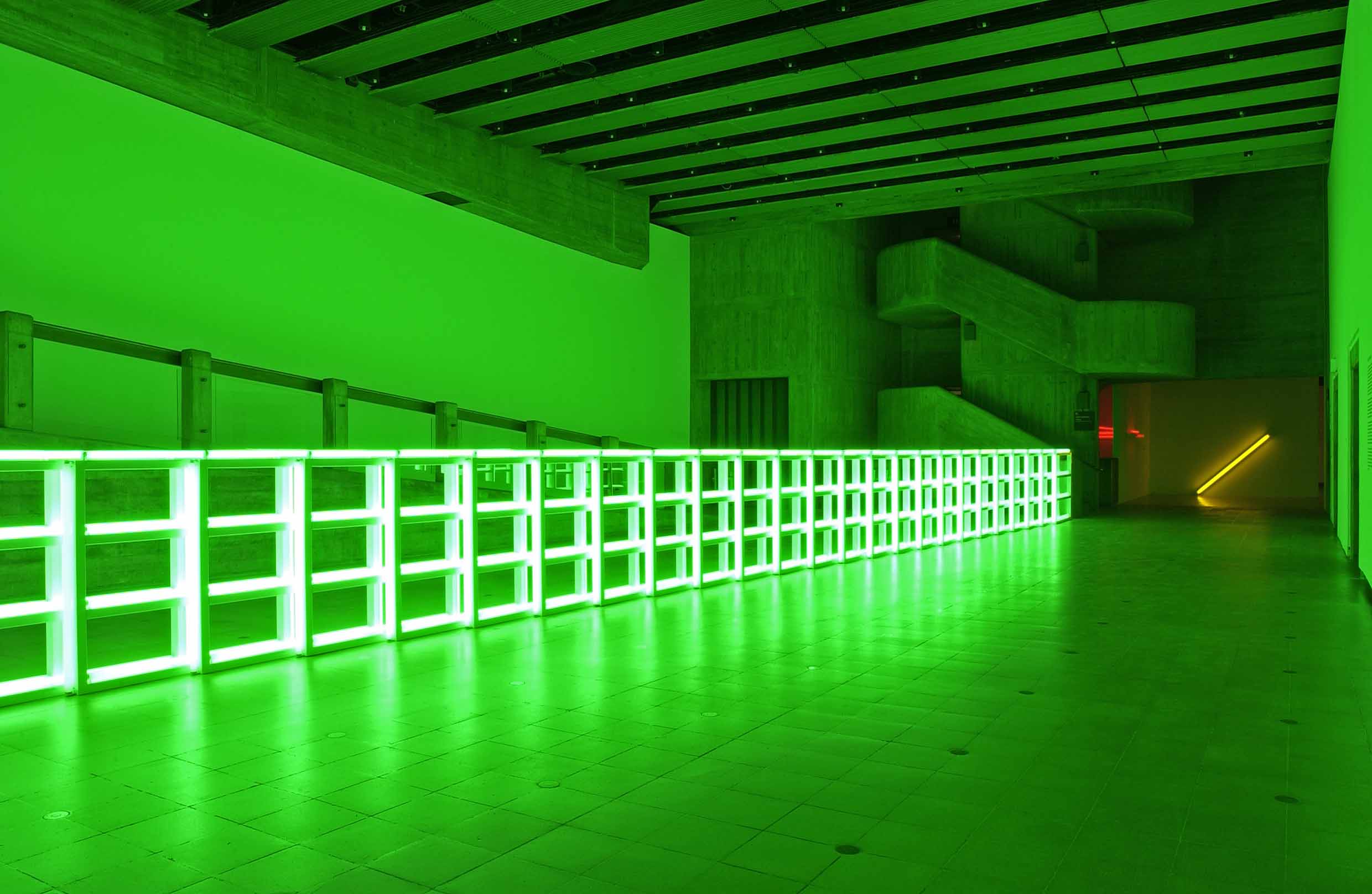A low hum greets visitors walking into the Hayward Gallery’s large restrospective of Dan Flavin (1933-96), an American artist who spent almost his entire career creating works of art – or “propositions”, as he fastidiously preferred to call them – from multifarious arrangements of mass-manufactured fluorescent lights. The sound is generated by the artist’s creations, the buzz emitted by a thousand neon tubes all turned on at the same time. This accidental electrical chant, a low-frequency equivalent to the “Om” uttered by yogic meditators, complements the already hypnotising experience of wandering through the artist’s chambers of dizzying, multi-coloured light. Flavin’s works are prompts to speculation, catalysts for meditation – although not, perhaps, of the transcendental kind.
He began dreaming of an art made entirely from the materials of modern electrical lighting sometime in the late 1950s and early 1960s, expressing the fantasy in a short poem inscribed in a delicate scrawl on a scrap of paper preserved, like a saint’s relic, among his notes and sketches: “fluorescent poles / shimmer / shiver / flick / out / dim / monuments / of / on / and / off / art.” Flavin, who spent thirty years creating “on-and-off art”, has been remembered as a leading member of the Minimalist generation. Like his contemporaries Carl Andre and Donald Judd, who assaulted the prevailing conventions of sculpture with their stacked bricks and industrially finished cubes of polished steel, he took an iconoclastic approach to the making of art. But whereas Andre and Judd flouted preconceptions about what sculpture should be, Flavin consciously set out to create a form of non-painting.
What might a painting look like, he asked himself, if robbed of most of its traditional attributes – purged of figurative reference, even of all apparent content? His answer was a series of...

Dan Flavin at The Hayward Gallery
22-01-2006

